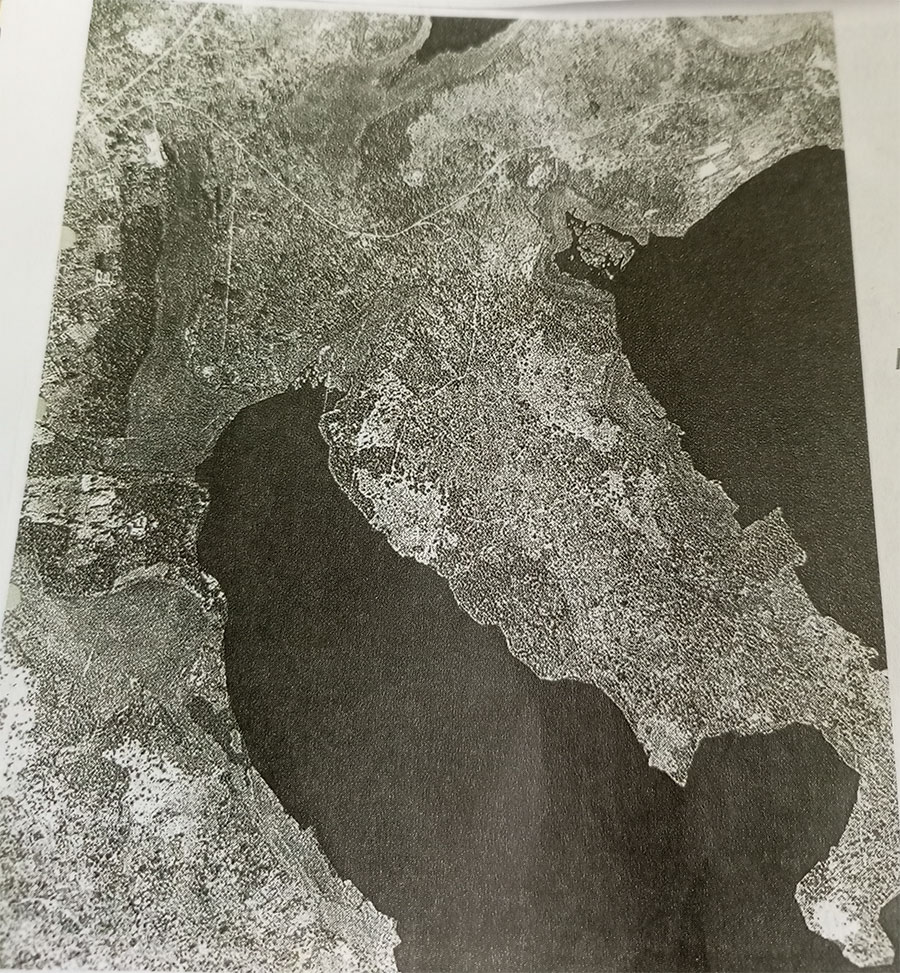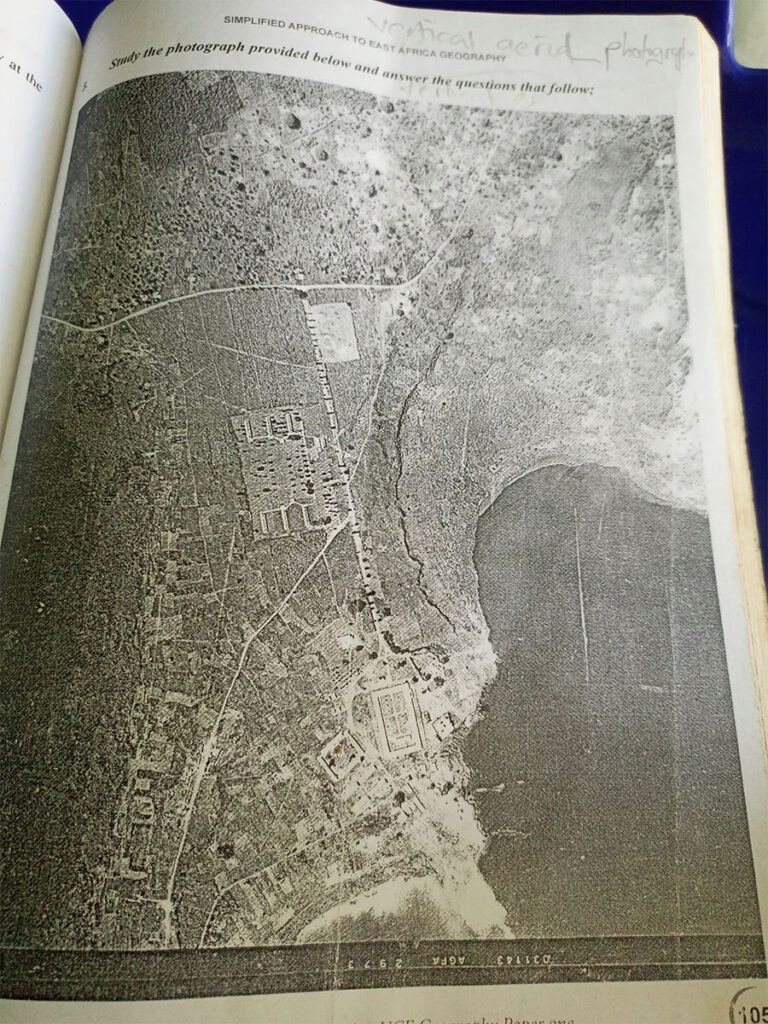Photographic Interpretation – Part 3
Vertical Aerial Photographs
These are taken from an air craft with the camera pointing directly at the ground.( At an angle of 90°).
Characteristics of vertical Aerial photographs.
-They cover a wide area.
– They show only tops of the objects. E.g tops of trees and buildings.
-objects appear very small in size and very difficult to read and interpret.
– Deep water bodies and forests absorb light and they appear black.ie waterbodies have a smooth black and forests form a rough black.
– They show a rectangular shape of the tops of buildings which reflect light and appear white.
– Objects appear to be below the observer.
– The bare ground reflect light e.g roads and therefore appear white.
– The horizon is not shown.
– These photographs show a lot of details for physical and man – made features.
Example One
Study the photograph provided below and answer the questions that follow.

a) Draw a sketch map of the area and on it mark and name
– water body
– a head land
– a bay
– islands
– forested area.
– settlements
– transport routes
b) Describe the processes responsible for the formation of the
– head land
– a bay.
C) Explain the problems faced by the people living in the area.
d) state the type of photograph provided above.
e) Giving reasons for your answer, suggest one area in East Africa where this photograph could have been taken.
Example Two
Study the photograph provided below and answer the questions that follow
Giving reasons for your answer, state the of photograph.
b) Draw a sketch map of the area shown on the photograph and on it mark and name;

– water body
– settlements
– transport routes
– farm land
– forested vegetation
c) Describe the factors which has influenced settlement in the area shown in the photograph.
d) Giving reasons for your answer, suggest an area in East Africa where this photograph could have been taken.

